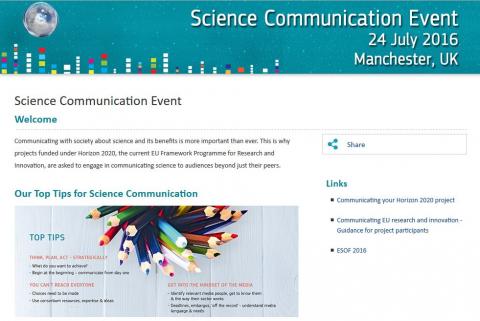Feed-a-Gene at H2020 Science Communication Event
Valérie Heuzé (AFZ, WP7 Communication and dissemination) attended on behalf of Feed-a-Gene the H2020 Science Communication Event held in Manchester on 24 July 2016. This event organised by the EU was aimed at Horizon 2020 coordinators. It focused on effective science communication techniques necessary to produce a "win-win" situation for researchers and media as well as other science communicators.
During this very informative and well-managed session, invited experts - experienced communicators, journalists and research project coordinators - provided examples of successful communication and explained their views on science communication: why they believe communication to be beneficial for researchers, the do’s and don’ts in communication and how to work together.
Special emphasis was put on the importance of communicating about the journey to the results rather than about the results themselves, and of telling the story of the project. This means talking about WHO is involved in the project - the researchers - and WHAT they are working on rather than HOW. This makes it actually easier for the public to understand what will be the impact of science on their everyday life. Messages should be short, simple, passionate and understandable by everyone, with a special focus on grandmothers, 10 year-old kids and neighbours! A good communication process engages people: this is possible if they are told a story and if researchers aim at building relationships. Social media like Twitter, LinkedIn, Facebook and blogs may be useful to achieve this goal. Successful communication should address multiple audiences through targeted messages and multiple channels, it should use high-quality images or videos, and also cool pictures.
The take home message of the session were:
- Make scientific communication VIP: visual, interactive, and personal
- Communication is possible since the very beginning of the project: it does not need results to be effective.
